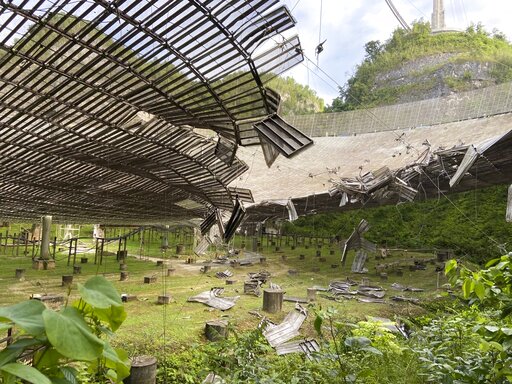

On December 15, they observed the asteroid Phaeton. They sent powerful radio waves streaming into space, waited for them to hit an asteroid millions of miles away, and then waited for them to bounce back to their battered antenna. With that, the observatory could use the diesel generators to run its power-sucking radar. And then in December, the region's electricity flickered on. In November, it tracked a fast radio burst, and did a run in cooperation with a Russian radio telescope. The telescope could still function, but its sensitivity was hobbled.ĭespite the dish difficulties, which continue today, the observatory slowly began to do more science, in low-power mode.

All the receivers still worked-save the one that, you know, crashed into the telescope. It couldn't quite focus, like if someone had warped your camera lens. “The shape of the dish itself had changed,” says Rivera-Valentin. But they also wanted to run a diagnostic on the scope's performance. In part, they wanted the scientific data. The observing run wasn't much, just "passive" work they just held the telescope’s pointing mechanisms in place and simply let the sky drift over as it watched for signals from pulsars.
Puerto rico telescope generator#
On September 29, staff brought the dish back online with generator power. “Anyone who came up and said we need to do laundry, they could do laundry.” FEMA helicoptered in supplies to pass out to the community. “Anyone who walked up to the observatory, they were getting water,” says Rivera-Valentin. When one of the the roads finally opened, about two days after the hurricane's landfall, local residents arrived for support. Meanwhile, the observatory itself had morphed into a relief center. And it did so at the same time that the telescope faces decreased funding from the National Science Foundation and a disruptive change in management. While the hurricane didn't knock Arecibo out, it did leave the telescope a fraction as effective as it once was. Eight months later, with recovery money from the federal government newly available, Arecibo is just beginning to bounce back. Like the island itself-which was hit with some $90 billion of damage, hundreds or thousands of deaths, and infrastructural failings-the observatory took a beating from Hurricane Maria. The telescope, though, was soon to meet with unusually strong forces of nature. As the hurricane approached, he also thought perhaps the observatory could be his bunker.
Puerto rico telescope professional#
Rivera-Valentin grew up in the city of Arecibo, and as an adult, the telescope became his professional home: He got his dream job using Arecibo's radar to study asteroids. Between the peaks sits Arecibo Observatory, the 1,000-foot-wide radio telescope where scientists have, since 1963, studied things up above. But Rivera-Valentin went to work, driving an hour or so into the island's karst formations, the knobby, tree-covered hills left as water dissolves limestone. Some people stayed with inland family or in shelters. “I knew I couldn’t stay there because something bad was going to happen,” he says.

His apartment was near the coast, in Manatí, and some projections had the storm passing directly over. In 1999, he telescope was instrumental in detecting the near-Earth asteroid Bennu, laying the groundwork for NASA to send a robotic probe there to collect and eventually return its first sample of an asteroid.Īn engineering firm hired by the University of Central Florida, which manages the observatory for the NSF under a five-year US$20 million agreement, last week concluded in a report “that if an additional main cable fails, a catastrophic collapse of the entire structure will soon follow.”Ĭiting safety concerns, the firm ruled out efforts to repair the observatory and recommended a controlled demolition.As Hurricane Maria approached Puerto Rico in late September 2017, planetary scientist Ed Rivera-Valentin knew he needed to get out. The observatory’s vast reflector dish and a 900-tonne structure hanging nearly 140m above it, nestled in a humid forest, had been used by scientists and astronomers around the world to analyze distant planets, find potentially hazardous asteroids and hunt for signatures of extraterrestrial life. Engineers have not yet determined the cause of the initial cable’s failure, a foundation spokesperson said.


 0 kommentar(er)
0 kommentar(er)
